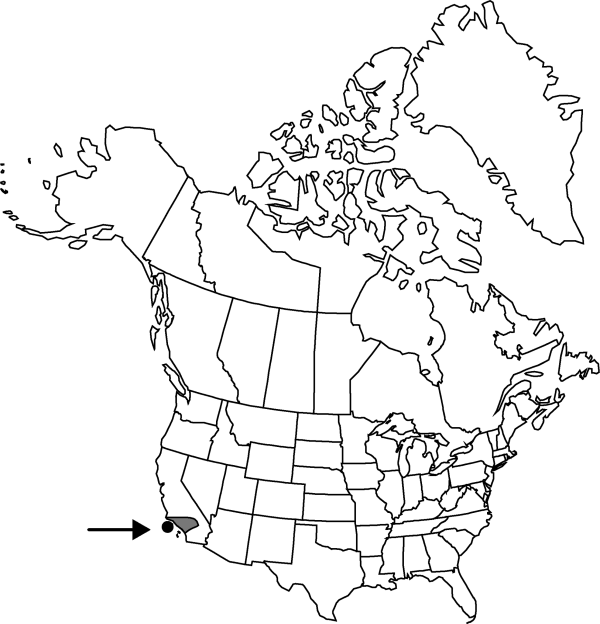Opuntia ×occidentalis
Proc. Amer. Acad. Arts 3: 291. 1856.
Shrubs, sprawling to erect, to 1.5 m. Stem segments not disarticulating, green, flattened, obovate, 19–35 × 14–18 cm, ± tuberculate, glabrous; areoles 5–7(–8) per diagonal row across midstem segment, oblong, 5–8 × 4–6 mm; wool dark brown. Spines 3–6 per areole, in most areoles (rarely few spined), spreading, straight, angularly flattened, subulate; abaxial 2–4 spines reflexed, shorter, to 20 mm; adaxial 1–2 spines yellow or white chalky with brown basal portions, 25–50 mm. Glochids in moderately dense crescent at adaxial edge of areole and subapical tuft, reddish brown, to 6 mm. Flowers: inner tepals yellow to deep pink, sometimes darker blush near base, to 50 mm; filaments usually yellow or white; anthers yellow; style pink or white; stigma lobes green. Fruits red-purple throughout, obovoid, 45–50 × 30–40 mm, juicy, glabrous, spineless; areoles 24–30. Seeds yellow-tan, 4–5.5 mm; girdle protruding to 1 mm. 2n = 66.
Phenology: Flowering spring (Apr–May).
Habitat: Coastal sage scrub, chaparral
Elevation: 10-500 m
Distribution

Calif. (including Channel Islands), Mexico (Baja California).
Discussion
Opuntia ×occidentalis is a hybrid complex involving three, perhaps more, species [at least O. littoralis × (O. engelmannii × O. phaeacantha)]. The hybrids are morphologically variable; the putative parents are all hexaploid. Another similar putative hybrid, O. demissa, probably involves O. oricola (B. D. Parfitt and M. A. Baker 1993).
Selected References
None.